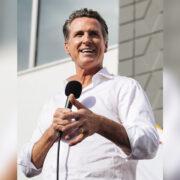IN THE Central American Republic of Santa Banana, public opinion polls are routinely conducted to determine how candidates for political office rank, ostensibly based on the preferences of the voters. But the way the surveys are conducted is pretty much like the system used by the most popular photographic studio in the country, the Santa Banana Portraiture & Repair Specialists.
The studio has a sign that reads: “Photos the way you look, $100. Photos the way you think you look – $500. Photos the way you want to look – $1,000. Incidentally, “$” stands for “Saging,” the country’s official currency.
The electoral surveys in Santa Banana are also made-to-order: Actual results, results for the benefit of the media, and results to impress the Consumisyon on Elections, the country’s official electoral body.
Having worked in the advertising business in the Philippines for longer than most of today’s marketing folks have been alive, I found the public opinion polls of Santa Banana very intriguing. So, I decided to take a trip to Santa Banana to check it out for myself.
You see, back in the wild and wooly Philippine media days, before President Ferdinand Marcos decided to regulate the operation and content of media (for “greater uniformity,” according to the Malacañang information office), the streetwise TV and radio network operators were expert at “influencing” the viewership and listenership surveys which determined the ratings.
For the benefit of those unfamiliar with the “ratings game,” this refers to the process of determining which radio or TV network has the most number of listeners or viewers and which programs are the most popular. The information is presented as “ratings.” These guide advertisers and their agencies in their choice of programs and the allocation of advertising budgets.
Up to the present, the “ratings game” is being played by the networks with the ferocity of a game of ice hockey. When giant networks put out press releases in the dailies on which of them has the “highest ratings,” the information is not intended for the average readers but for the advertisers and agencies.
At any rate, back in the old days, whenever research personnel went to the provinces to conduct the viewership and listenership surveys, all kinds of tactics were employed by some networks to rig the results. But the tactics were relatively benign back then.
One way was for a network to launch a promotion (offering big prizes) during the period of the survey.
Expectedly, the network enjoyed a significant increase in viewership or listenership – artificial, of course, but an increase, anyway, which showed in terms of higher ratings.
Expectedly, there were rumors of field interviewers being paid off and of research findings being altered. But I don’t recall anyone ever proving anything.
Advertisers and ad agencies also conducted their own provincial surveys. In such a case, the SOP was for the radio or TV station managers to meet the client or agency representatives at the airport (it was a race to get to the reps first) and to “take care” of them during their entire stay in town.
That meant, driving them through neighborhoods where virtually every household was tuned in to a particular station (previously arranged, of course) and then treating them to drinks and “entertainment for the boys,” if you know what I mean.
You can imagine what the reports to the home office looked like.
But I’ve been away from Manila too long to know how viewership and listenership surveys are conducted these days.
So, I wouldn’t want to speculate on their credibility. Besides advertisers and agency folk are too jaded to fall for the old tactics.
Anyway, I really meant that as a backgrounder on my inquiry into the way the public opinion polls in Santa Banana are conducted.
The current campaign in Santa Banana is for a mid-term election, with the senatorial positions being the most important. Because of the present political environment, this senatorial contest is considered “a preview” of the next presidential elections. In other words, the “team” that has the most number of winners in its senatorial slate will most likely have a say on who the next president will be.
Note that I use the term “team” instead of “political party,” because there are really no political parties in Santa Banana. If politicians in the Philippines used to be known as Liberals or Nacionalistas, Santa Banana politicians are all Oportunistas. The two most dominant teams are Team Balut and Team Unano. Most of the winning senatorial candidates are expected to belong to the two teams.
In Santa Banana, there are two major research companies that traditionally conduct voter surveys: Weather-Weather Research Company and Plus-and-Minus Survey Specialists.
From my inquiries, the top management of both Weather-Weather and Plus-and-Minus have impeccable professional credentials and their integrity is beyond reproach. And yet, all kinds of doubts have been heaped on the results of their surveys.
Of course, the doubts have come mainly from the candidates who have not landed in the so-called “Magic 12,” or those likely to win.
I decided to talk to some of the disgruntled candidates.
“The surveys are rigged,” griped one of them, a former senator who had termed out and was running again. “How can an absolute newcomer with no record of performance in public service and very little name recognition land in the winner’s list, while I end up near the bottom? Isn’t that fishy?”
“But I hear that the folks who run the research companies are professionals and are beyond reproach,” I said.
“Maybe they are, but can you say the same thing about the field interviewers?”
That struck a familiar chord. Back in the wild and wooly Philippine media days, the hanky-panky happened out in the field where the interviews were being conducted.
“For instance,” the disgruntled candidate went on, “the interviewers can be paid off – how much do they earn, anyway?”
“But don’t they have field supervisors to check on them?”
“They can be paid off, too,” came the reply.
Another senatorial candidate whom I spoke with rattled off other ways of rigging the surveys. According to him, the respondent base could be tampered with, to ensure biased results. The legitimate questionnaires could also be replaced with pre-answered ones.
“Just like pre-filled-out ballots?” I asked.
“Same technique,” he said.
Then he added: “And finally, the tabulation could be altered. Remember how the tabulators at the PICC in the snap elections in the Philippines walked out because they were being asked to alter the results?”
I did remember that. That was the prelude to the People Power uprising.
“I didn’t realize how easy it is to rig public opinion polls in Santa Banana,” I said, rather naively.
“You better believe it,” said another senatorial candidate. “In fact, someone approached me and offered to get me in the top 12 for a price of $5 million.”
“Oh, yeah?” I reacted, shocked. “And what did you do?”
“I’m still trying to raise the money,” was his reply.
***
Email [email protected].




